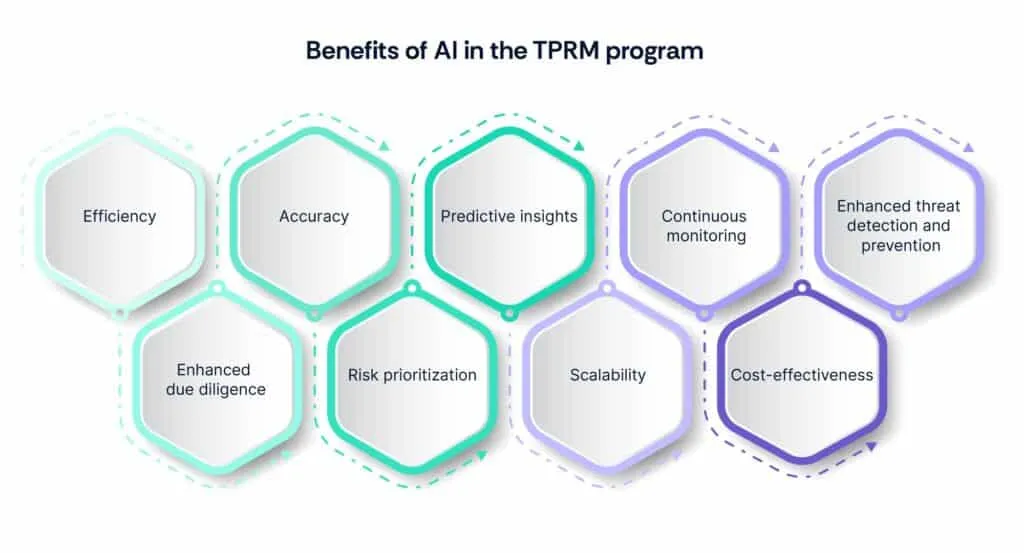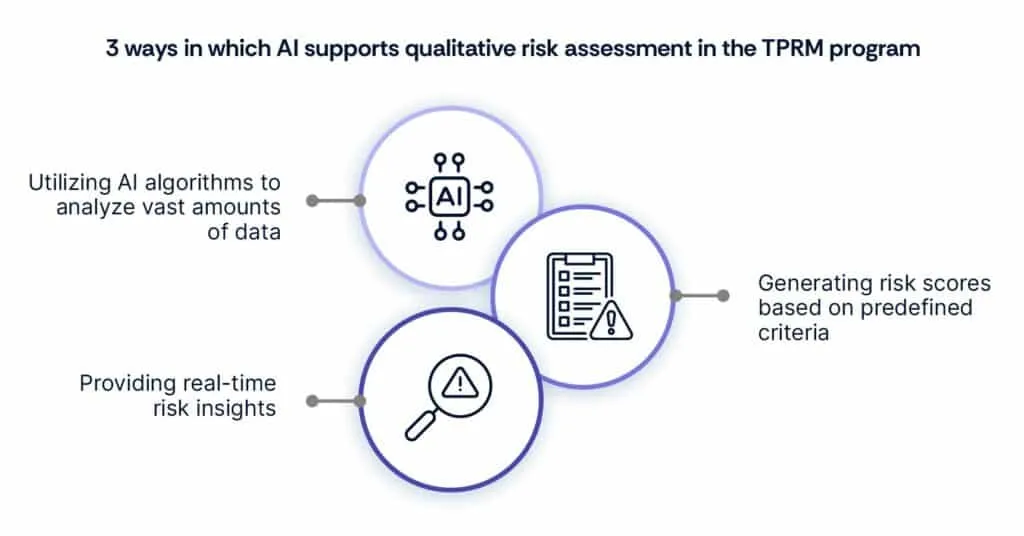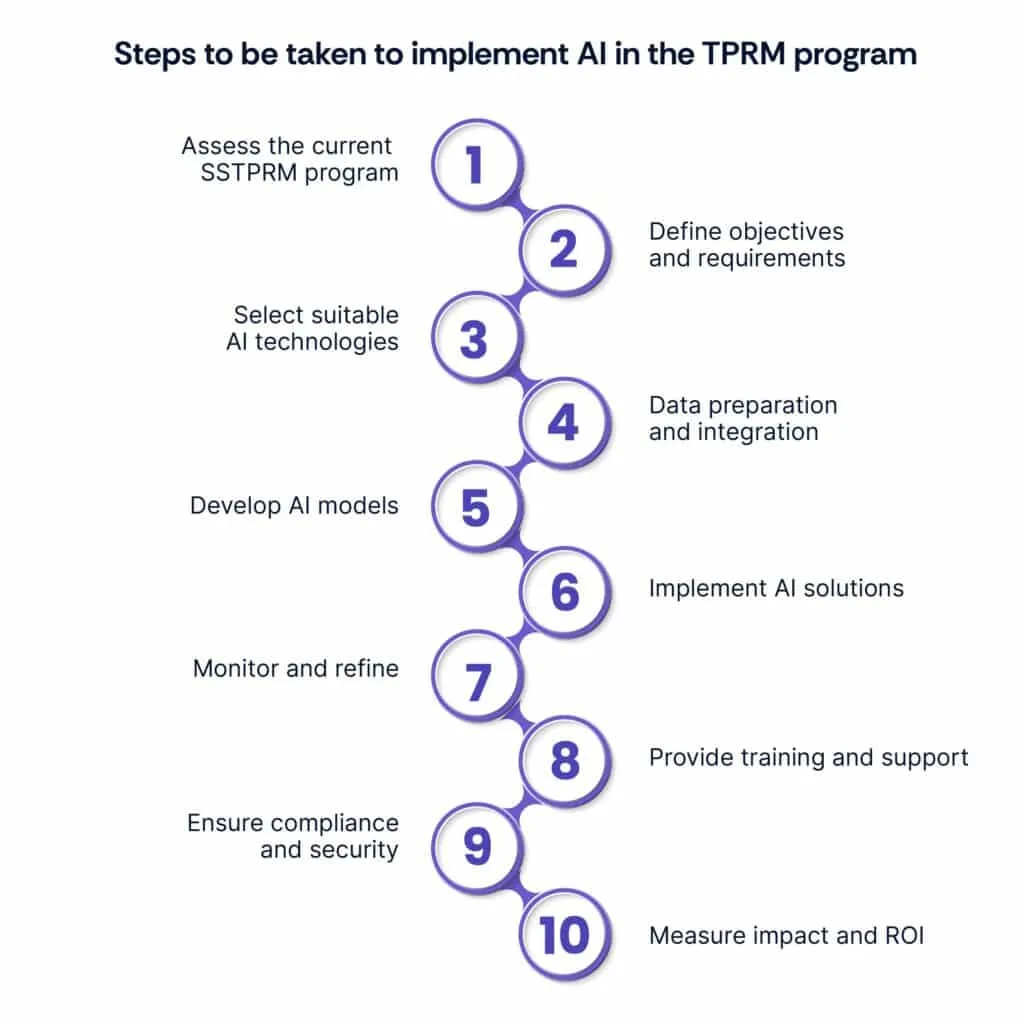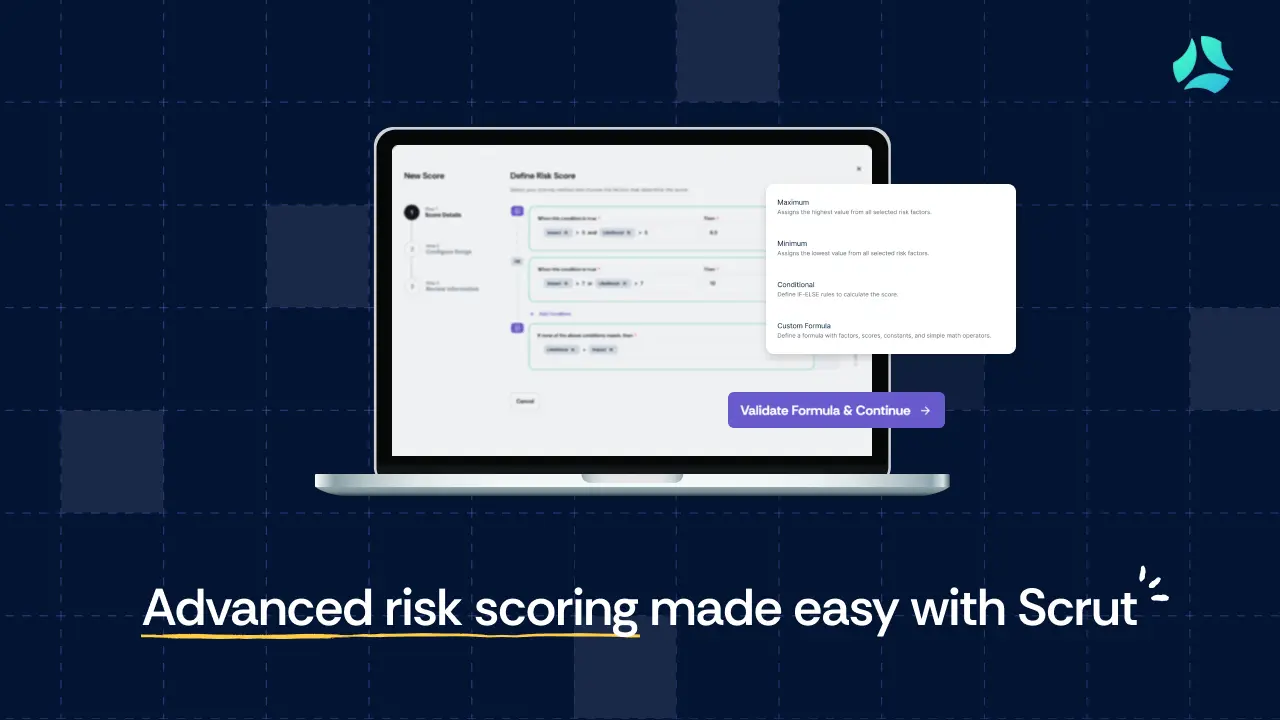Revolutionizing TPRM: AI-powered quantitative risk assessment guide

Risk assessment in cybersecurity involves a thorough process of identifying, analyzing, and evaluating potential risks and vulnerabilities to an organization’s information systems and data. It begins with the identification phase, where assets, vulnerabilities, threats, and potential impacts are recognized and cataloged.
Subsequently, in the analysis stage, the likelihood and potential impact of identified risks are assessed to understand their severity. Following analysis, the evaluation phase prioritizes risks based on their severity and potential consequences to the organization. After prioritization, the mitigation phase commences, where strategies and controls are developed to reduce or eliminate risks.
Finally, the monitoring phase involves continuously reviewing and reassessing the cybersecurity posture to adapt to evolving threats. This comprehensive approach to risk assessment helps organizations proactively manage cybersecurity risks and safeguard their assets and data from potential threats and vulnerabilities.
There are several risk quantification methods implemented by different organizations. These methods include but are not limited to, FMEA, SWOT analysis, TPRM, and others. Third-party risk management is one of the most reliable methods for risk quantification. In this article, we will discuss how organizations can integrate AI and quantitative risk into the TPRM program.
What is TPRM?
TPRM meaning and definition:
TPRM involves several key steps:
- Identification: Recognizing all third-party relationships and understanding potential risks they may introduce.
- Assessment: Evaluating the security posture, data handling practices, and regulatory compliance of third parties to assess the level of risk they pose.
- Mitigation: Implementing strategies and controls to reduce or eliminate identified risks, which may include contractual obligations, security assessments, and ongoing monitoring.
- Monitoring: Continuously monitoring third-party activities to ensure compliance with security standards and contractual obligations.
TPRM is crucial for safeguarding organizations against various risks, including data breaches, regulatory violations, and reputational damage. By effectively managing third-party risks, organizations can enhance their security posture and maintain trust with stakeholders.
Importance of TPRM in today’s cybersecurity landscape

TPRM plays a critical role in today’s cybersecurity landscape due to several key reasons:
1. Increased dependency on third parties
Organizations increasingly rely on third-party vendors and service providers for various aspects of their operations, including IT infrastructure, software development, and cloud services. This dependency exposes them to the cybersecurity risks associated with these external partners.
2. Complexity of supply chains
Supply chains have become more interconnected and complex, with multiple tiers of suppliers and subcontractors. Each link in the supply chain represents a potential cybersecurity vulnerability, making it essential to manage risks across the entire ecosystem.
3. Regulatory compliance
Regulatory bodies worldwide are imposing stricter requirements on organizations to ensure the security and privacy of sensitive data, including data shared with third parties. Compliance with regulations such as GDPR, CCPA, and HIPAA necessitates robust TPRM practices to avoid hefty fines and penalties.
4. Heightened cyber threats
The cybersecurity threat landscape continues to evolve, with threat actors targeting organizations through supply chain attacks and third-party breaches. TPRM helps organizations preemptively identify and mitigate these threats to protect their data and assets.
5. Preservation of reputation and trust
A security breach or data compromise involving a third-party vendor can severely damage an organization’s reputation and erode trust with customers, partners, and stakeholders. Effective TPRM helps mitigate these risks and maintain trust in the organization’s ability to safeguard sensitive information.
Understanding AI in the TPRM program
AI in TPRM refers to the use of artificial intelligence and machine learning technologies to enhance the efficiency, accuracy, and effectiveness of managing risks associated with third-party vendors and service providers.
Advantages of AI in the TPRM program

AI offers numerous advantages in the TPRM program
- Efficiency: AI automates repetitive tasks and analyzes vast amounts of data quickly, allowing organizations to identify and assess third-party risks more efficiently than manual methods.
- Accuracy: AI algorithms can process and interpret data with a high degree of accuracy, reducing the likelihood of human error in risk assessment and decision-making processes.
- Predictive insights: AI-powered predictive analytics can forecast potential risks and vulnerabilities based on historical data and emerging trends, enabling organizations to proactively address risks before they escalate.
- Continuous monitoring: AI-driven monitoring solutions can continuously track third-party activities and behaviors in real-time, providing organizations with timely alerts and insights into potential risks or anomalies.
- Enhanced threat detection and prevention: AI algorithms can analyze complex patterns and behaviors to detect potential threats posed by third parties, enabling organizations to prevent security breaches and mitigate risks effectively.
- Enhanced due diligence: AI enables organizations to conduct more comprehensive due diligence on third parties by analyzing unstructured data sources such as news articles, social media, and financial reports, providing deeper insights into a vendor’s reputation and reliability.
- Risk prioritization: AI algorithms can assign risk scores to third parties based on various factors, allowing organizations to prioritize their risk management efforts and allocate resources effectively.
- Scalability: AI technologies can scale to handle large volumes of data and adapt to evolving risk landscapes, ensuring that organizations can effectively manage third-party risks as their business grows.
- Cost-effectiveness: By automating repetitive tasks and streamlining processes, AI can reduce the time and resources required for TPRM services, resulting in cost savings for organizations.
AI-powered quantitative risk assessment
Quantitative risk assessment (QRA) is a structured approach used to evaluate risks by assigning numerical values to various factors, such as the likelihood of an event occurring, its consequences, and the potential impact on assets, individuals, and the environment. It involves the use of mathematical models and statistical techniques to quantify risk levels, allowing for more precise risk analysis and decision-making.
QRA typically relies on realistic and measurable data to calculate the probability and severity of risks, providing stakeholders with quantitative insights into the potential risks associated with a particular activity, project, or process. By quantifying risks, organizations can prioritize risk mitigation strategies, allocate resources effectively, and make informed decisions to minimize potential losses and maximize opportunities.
How AI facilitates quantitative risk assessment in the TPRM program:

1. Utilizing AI algorithms to analyze vast amounts of data
AI algorithms excel at processing and analyzing vast amounts of data swiftly and accurately. In TPRM, these algorithms can sift through diverse data sources, including historical records, transactional data, and real-time feeds, to identify patterns, anomalies, and potential risks.
By leveraging machine learning techniques, AI systems can identify subtle correlations and trends in data that might be missed by traditional methods. This comprehensive analysis enables organizations to gain deeper insights into their third-party risk landscape and make more informed decisions.
2. Generating risk scores based on predefined criteria
AI-driven risk assessment tools utilize predefined criteria and risk models to generate risk scores for third-party relationships. These criteria may include factors such as financial stability, regulatory compliance, cybersecurity posture, and reputational risk.
By applying advanced analytics, AI algorithms can weigh and evaluate these criteria to assign a quantitative risk score to each third-party vendor or supplier. This scoring system helps organizations prioritize their risk management efforts and allocate resources effectively.
3. Providing real-time risk insights
AI empowers organizations to monitor third-party activities in real time, enabling the detection of emerging risks as they occur. AI-based monitoring systems can analyze vast streams of data, including transaction logs, network traffic, and social media feeds, to identify suspicious behavior or deviations from normal patterns.
By providing real-time risk insights, AI enables organizations to respond swiftly to potential threats, mitigate risks proactively, and prevent adverse outcomes. This proactive approach enhances the resilience of the organization’s third-party ecosystem and strengthens its overall risk management capabilities.
Implementing AI in the TPRM program

Integrating AI into the TPRM program involves several key steps to ensure its successful implementation. More often than not, organizations rely on TPRM software to implement AI in their TPRM programs. These TPRM tools vary in features, scalability, integration capabilities, and pricing, so organizations should evaluate their specific requirements and conduct thorough due diligence before selecting the most suitable option for their needs.
Here’s a comprehensive guide to implementing AI in the TPRM program of the organization:
Step 1: Assess the current TPRM program
Evaluate existing TPRM processes to identify areas where AI can enhance efficiency, accuracy, and effectiveness. Understand the workflow, data sources, and pain points in the current processes.
Step 2: Define objectives and requirements
Clearly define the objectives of integrating AI into the TPRM program, such as improving risk assessment accuracy, reducing manual effort, or enhancing real-time monitoring. Identify specific requirements and functionalities needed from AI solutions to achieve these objectives.
Step 3: Select suitable AI technologies
Research and select AI technologies that align with the defined objectives and requirements. Consider factors such as machine learning algorithms, natural language processing capabilities, scalability, and compatibility with existing systems.
Step 4: Data preparation and integration
Prepare and clean data from various sources, ensuring its quality, relevance, and consistency. Integrate data from internal systems, third-party sources, and external feeds into the AI platform for analysis.
Step 5: Develop AI models
Train AI models using historical data to learn patterns, correlations, and risk indicators relevant to TPRM services. Collaborate with data scientists or AI experts to develop and fine-tune machine learning algorithms tailored to TPRM use cases.
Step 6: Implement AI solutions
Deploy AI solutions into TPRM processes, integrating them seamlessly with existing workflows and systems. Ensure proper configuration, testing, and validation of AI models to meet performance and accuracy standards.
Step 7: Monitor and refine
Continuously monitor the performance of AI models in real-world TPRM scenarios. Gather feedback from users, identify areas for improvement, and refine AI algorithms iteratively to enhance their effectiveness and adaptability.
Step 8: Provide training and support
Train TPRM teams and stakeholders on using AI-enabled tools and interpreting insights generated by AI models. Offer ongoing support and guidance to address any challenges and maximize the value derived from AI integration.
Step 9: Ensure compliance and security
Adhere to regulatory requirements and data privacy standards when handling sensitive information in TPRM processes. Implement robust security measures to protect AI models, data assets, and infrastructure from cyber threats.
Step 10: Measure impact and ROI
Evaluate the impact of AI integration on TPRM outcomes, such as risk assessment accuracy, efficiency gains, and cost savings. Calculate the return on investment (ROI) to justify the implementation of AI solutions and guide future investments.
By following these steps, organizations can effectively integrate AI into their TPRM processes, leveraging advanced technologies to enhance risk management capabilities and mitigate third-party risks more effectively.
Winding up
Effective cybersecurity risk assessment, especially through Third-Party Risk Management (TPRM), is vital for safeguarding organizations. The process of risk identification, analysis, mitigation, and monitoring ensures proactive risk management.
In today’s complex cybersecurity landscape, where organizations heavily rely on third-party vendors, robust TPRM practices are essential. Integrating artificial intelligence (AI) into TPRM offers advantages such as efficiency, accuracy, predictive insights, and continuous monitoring.
Implementing AI in TPRM involves assessing current processes, defining objectives, selecting suitable AI technologies, data preparation, model development, implementation, monitoring, training, and ensuring compliance.
In summary, AI integration in TPRM enables organizations to mitigate risks proactively and maintain trust with stakeholders in an evolving cybersecurity landscape.
Ready to elevate your risk management strategy with cutting-edge technology? Schedule a demo with Scrut today and experience the power of AI-driven risk management solutions. Safeguard your organization’s future, one step ahead of potential threats.
FAQs
1. What is Third-Party Risk Management (TPRM)?
TPRM is a crucial aspect of risk management focused on identifying, analyzing, and mitigating risks associated with outsourcing to third-party vendors, suppliers, or service providers. It involves assessing the security posture, data handling practices, and regulatory compliance of third parties to mitigate potential risks they may introduce.
2. Why is TPRM important in today’s cybersecurity landscape?
TPRM is essential due to increased dependency on third parties, the complexity of supply chains, regulatory compliance requirements, heightened cyber threats, and the preservation of reputation and trust. Effectively managing third-party risks is critical for safeguarding organizations against data breaches, regulatory violations, and reputational damage.
3. What role does AI play in TPRM?
AI enhances TPRM by automating risk identification, providing predictive analytics, enabling enhanced due diligence, facilitating continuous monitoring, and supporting risk scoring and prioritization. AI-powered quantitative risk assessment allows organizations to quantify risks more precisely, prioritize mitigation strategies, and allocate resources effectively.


















